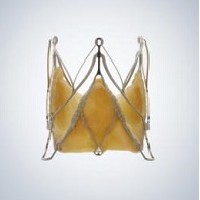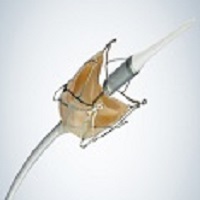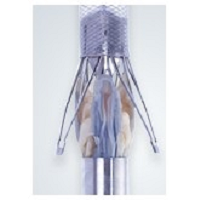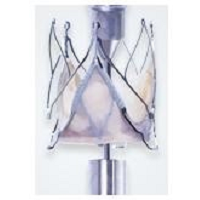TAVI
JenaValve
JenaValve is focused on developing transcatheter systems designed for transapical and transfemoral delivery. Each delivery approach features a separate valve design that is customized for enhanced valve performance and delivery. Both prosthesis designs integrate the unique features of the stent, especially the positioning feelers and the JenaClip™ mechanism, to ensure correct positioning and to optimize the prosthesis performance.
The JenaValve consists of a porcine root valve sewn onto a Nitinol self-expanding stent. The root valve is fitted with an outer porcine pericardial patch, a so-called skirt, before being sewn onto the stent.
Feeler guided, anatomical positioning
The Nitinol, self-expanding stent has three feelers, which enable cardiac surgeons to accurately position the prosthesis in the anatomically correct position. The feelers are placed in the sinuses of the patient’s native valve after which the prosthesis is released. This results in the commissures of the prosthesis positioned precisely on the commissures of the patient’s native valve. Rapid pacing is not required during prosthesis positioning and release, hemodynamic flow is maintained during prosthesis placement.
Low profile prosthesis design
The low profile of the prosthesis ensures open flow to coronaries after the implantation. The JenaValve is available in three sizes, 23mm, 25mm and 27mm, covering aortic valve annuli from 21mm to 27mm.
JenaClip™ anchoring mechanism
After the feelers have been placed in the correct position in the sinuses of the patient’s native valve, the lower part of the prosthesis is released. The patient’s native valve leaflets are hence clipped between the feelers and the basis of the prosthesis. This clipping mechanism firmly anchors the The JenaValve in the correct anatomical position and provides active fixation and resistance to migration.
Retrievable and repositionable
During the positioning of The JenaValve the system is fully repositionable and retrievable. Puts the Heart Team in control.






